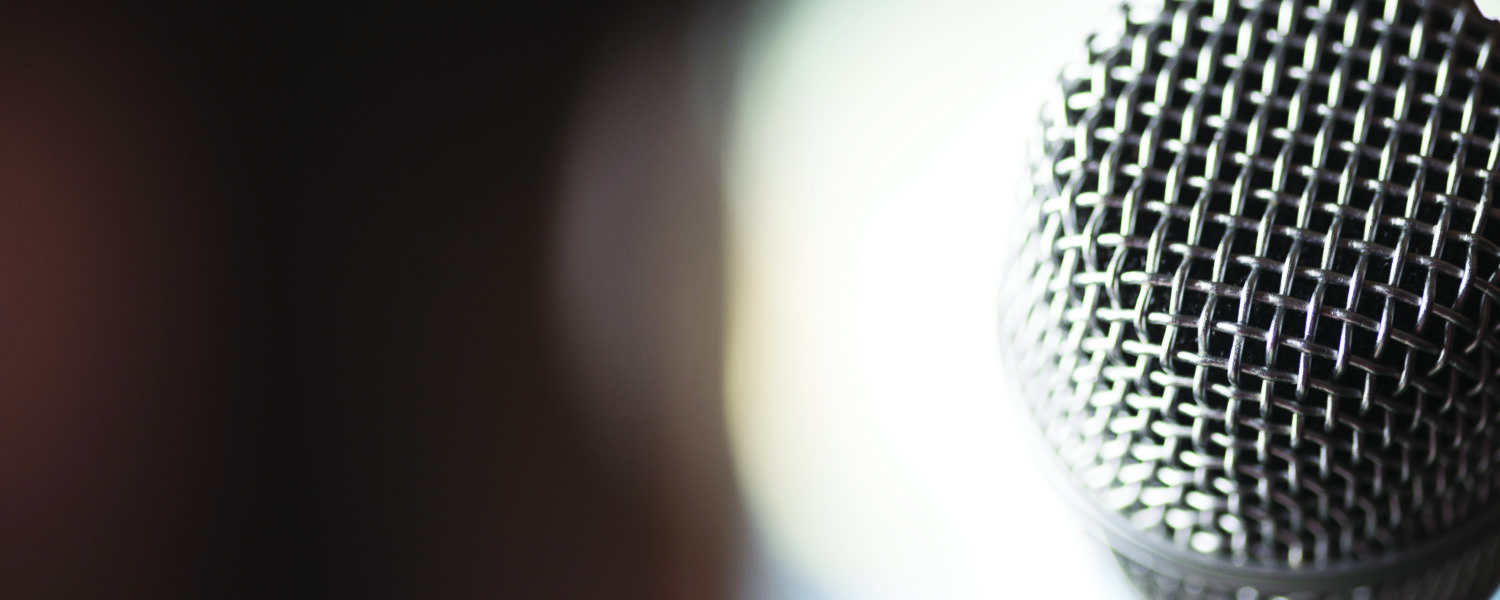By Brandon Hilgemann
I once preached a sermon that I thought was one of my best yet. But then I watched the recording, and I was horrified!
My mic popped and hissed throughout the entire message. It was distracting and embarrassing.
Has this ever happened to you?
A great sermon can be spoiled by a bad microphone.
- Feedback
- Popping sounds
- It’s so loud that it hurts people’s ears.
- It’s so quiet that people cannot hear you.
- The mic stops working and you are dead in the water.
When a mic is good, you shouldn’t notice. Your voice is clear. But when a mic is bad, it distracts the audience and derails the sermon.
So, what is the best microphone to help you preach with clarity while limiting distractions? Here are your options.
Podium
The podium mic is the most dated microphone. As its name suggests, this is the microphone that is attached to the pastor’s podium.
It can be good for situations where multiple people will speak from a podium, such as a funeral or commencement ceremony.
However, it is often visible in front of the preacher. It chains the pastor to the podium because sound decreases the further away they move. And if the pastor is not staying in the same spot, head pointing towards the microphone, the sound level fluctuates.
If you want a more academic or traditional feel to your sermon, and you preach directly from a manuscript, this mic may be your preference. If so, I hear the Shure MX418D is a good choice.
Otherwise, I recommend choosing a different option.
Handheld
I know pastors who prefer a wireless handheld microphone.
A handheld microphone offers flexibility for the pastor to have some control over their volume by holding the mic closer to their mouth or further away.
If a pastor likes to shout or whisper, they can hold the mic further or closer for the desired effect.
Sound techs, however, often do not like handheld microphones because the pastor has too much control. The tech may have trouble maintaining a steady volume level. If the pastor is holding it too far away, the tech will have to boost the level and risk feedback.
Handheld microphones also limit your gestures since one hand is always tied to the mic.
Although I do not prefer it for preaching, I love this microphone for other people on stage—vocalists, announcements, offering talks, communion talk, reading Scripture, or being interviewed.
It is an easy mic for people to understand, pass around, and feel comfortable with.
I recommend starting with the Shure PG58 and the dual BLX288 receiver. Shure is one of the best, most trusted brands in the business.
Lapel
Lapel microphones (commonly called lavalier microphones) were popular in churches years ago because they offered a hands-free, less visible, wireless option.
You may notice that a lot of TV talk shows use this style of microphone. Why not churches?
Unfortunately, lavalier mics are not ideal for large speaking environments.
They are much easier to control in a television studio than in a live, on-stage environment like a church or concert.
Most churches have moved on from lapel mics because it is difficult to get the sound level right without feedback or excess room noise.
If you prefer a lapel mic, I have heard nice things about the Sennheiser system. But I would caution you to do your homework and make sure that this is the right microphone for you (and your speaking environment) before making the investment.
Headset
The headset mic is by far the most popular choice for preachers today, and it’s the microphone I prefer.
Sound techs like them because they offer clearer, fuller, and more controlled sound since they are positioned near the pastor’s mouth.
Pastors like them because their hands are free, they are wireless to move around the stage, and they deliver quality sound.
My only problem with a headset mic is that I move a lot. If not fit properly, the mic can wiggle and fall off my ear, drift from my mouth, or get too close to my face.
If not positioned correctly, you can still get feedback or plosives (the sound from air caused making “p” sounds). That is why I recommend getting one that fits over both ears.
If you want a top-of-the-line headset microphone, I like the Countryman H6. If you need something a bit more affordable, the Shure MX153 may be worth a look.
As a final note, when it comes to sound equipment, you often get what you pay for. A cheaper microphone, even if it sounds alright, may not last as long as a quality mic. If you can, I suggest saving and investing in a quality mic.
These are the microphones I have either use or have been recommended by people I trust.
What microphone do you use for preaching?
Brandon Hilgemann is a pastor, the founder of ProPreacher.com, and the author of Preaching Nuts & Bolts: Conquer Sermon Prep, Save Time, and Write Better Messages.












